|
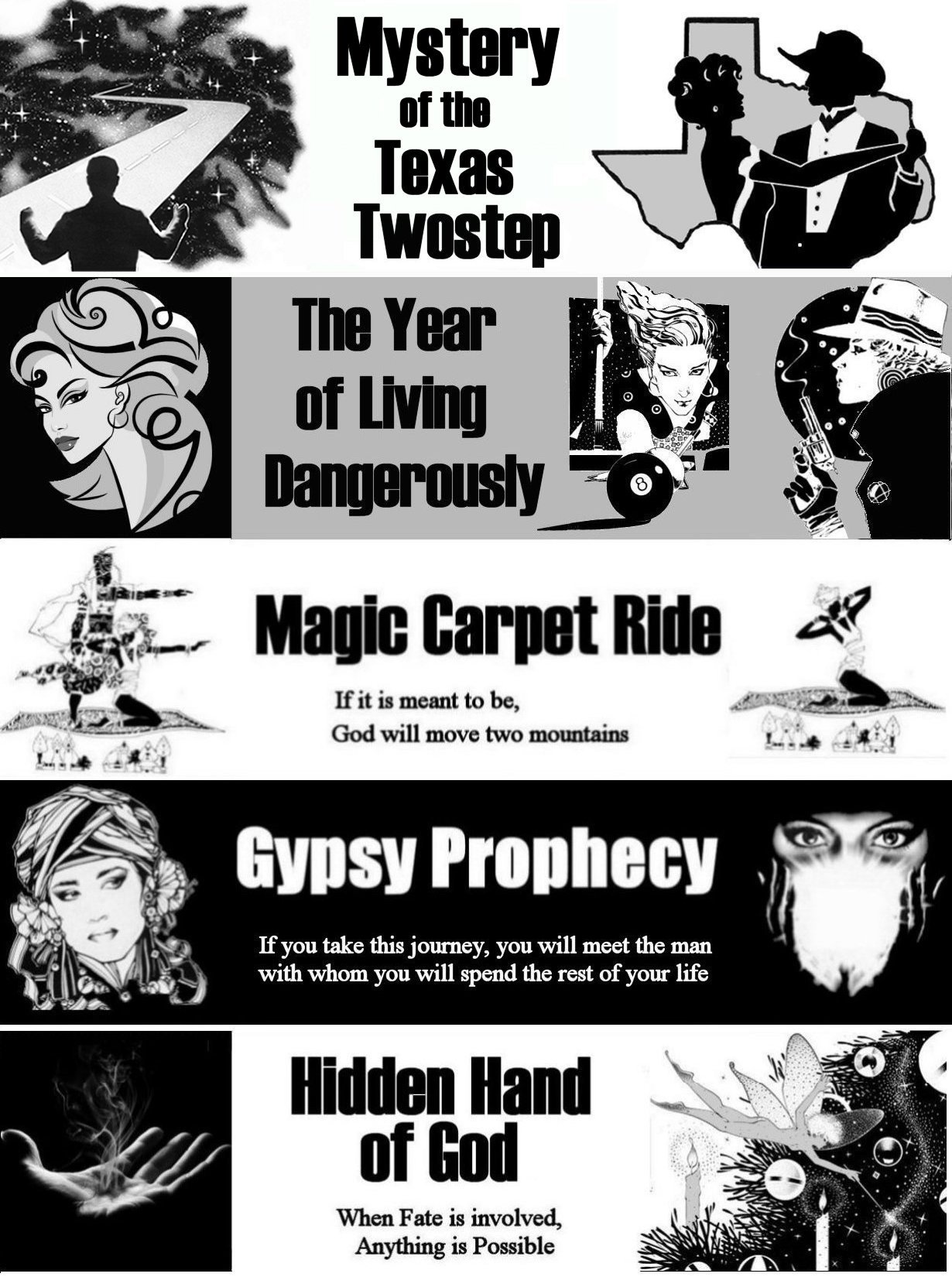
|
MYSTERY OF THE
TEXAS TWOSTEP
CHAPTER SIX:
THE WIZARD OF OZ
Written by Rick
Archer
|
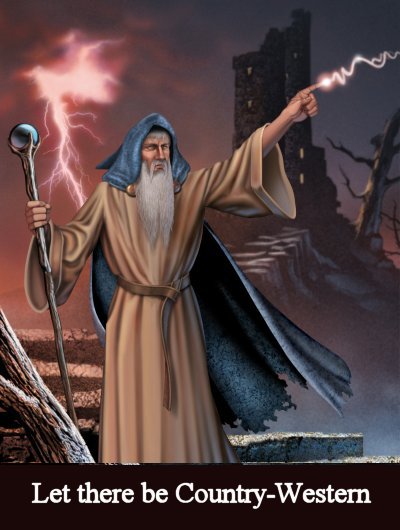 |
Rick Archer's Note:
"Why?" I asked, "is Houston the
only city in America affected by the filming
of Urban Cowboy. What possible
reason can explain why Disco is facing a
premature death here, but nowhere else?"
As I watched Disco die before my eyes, my
conclusion was that some mysterious Wizard
of Oz was responsible for ruining my life.
I probably had more to lose by the Western
Transformation than anyone else in the city.
So a dance club changes its spots. Big
deal. Does the DJ lose his job?
No. The bartender? No. The
waitress? No. What about the
club owner? Nope. From what
people told me, the new Western clubs were
doing a thriving business. Texans like
beer and they like Country music. But
what about me? I was about to lose the
most important thing in the world... my
career as a Disco dance instructor.
That is why I was going mad trying to
understand the reason for these strange
developments that quite frankly did not make
a bit of sense. First and foremost was
the fact that Disco was at its peak of
popularity in every part of the country but
Houston.
Why Houston? And who had the power to
pull this off?
I never got my answer. Or at least I
never got my answer back when it might have
mattered. However, through the miracle
of the Internet, 40 years later I got my
answer. The Wizard of Oz was a man
named Clay Felker.
Due to Mr. Felker's importance to my story,
let's take a closer look.
|
|
THE MAN WHO
INVENTED NEW YORK |
|
 |
If I
can make it there, I'll make it anywhere,
Come on, come through, New York, New York.
-- Frank
Sinatra
|
|
Clay Felker was the embodiment of
Frank Sinatra's
famous song. If Felker could make
it in New York, he could make it anywhere. Coming from
Missouri, Felker was an outsider who wanted to be an
insider. Due to his prodigious talent, he succeeded royally.
Thanks to his
position as editor of the influential New York
Magazine, Clay Felker became the
ultimate New York City insider.
Throughout his
career, Clay Felker was known as a 'trend-spotter'.
In his 2008 obituary, Felker
was quoted about his love for
trend-spotting. Felker said, "Journalism is very often about
seeing
the future."
This was a
fitting observation about a man who time and again
practiced what he preached. Felker tried to
stay ahead of the curve. As a magazine editor,
Felker understood the importance of reporting on
interesting developments well in advance of his
competitors. For that reason he honed a keen eye for
stories that would capture the public's interest
long before they became obvious to rivals of his
magazine.
Sometimes
Felker went one step further. He would see something that
was ready to happen, then authorize a story that fanned the flames
enough to ensure it
actually did happen.
Intimately
connected to the pulse of America as well as NYC, Clay Felker was
one of the most influential journalists of his time.
Back in the Sixties and Seventies, Clay Felker was the legendary editor of
New York Magazine. Felker not only
created
New York, he also helped create
The Village Voice. In addition
Felker helped
his friend Gloria Steinem start
Ms magazine.
|
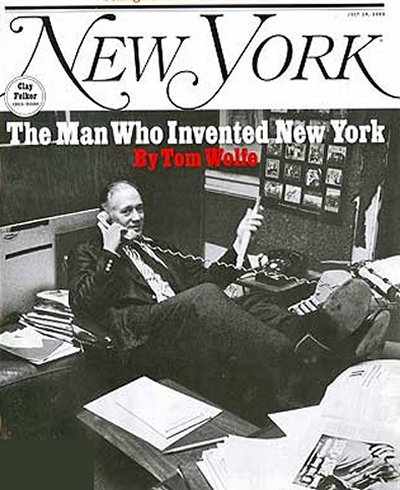 |
 |
Due to his plum
position in the media business, Clay Felker was said
to have more contacts than believed humanly
possible. A celebrated
man about town, Felker made it his
job to know
every important person in news, television, politics, theater,
music,
fashion, Wall Street, Hollywood, you name it. As his
writer friend Tom Wolfe put it, "Clay Felker was the
man who invented New York".
As an
example of
New York magazine's influence, Felker's
business partner Milton Glaser
designed the iconic "I Love New York"
logo as a way to boost tourism. In years
since, Glaser's logo has become a widely recognized symbol of
New York City.
Two subjects near and dear to Felker's heart were
'Status' and 'Subcultures'. Felker
called it 'Keeping tabs on the Haves and Have Nots'. Status came first. Felker was fascinated
by ambition and social climbing. More than likely, Felker
developed this preoccupation because he wanted to
be just as famous as the people he associated with.
They say one is defined by the company they keep.
Surrounded daily by important celebrities, Clay Felker became a celebrity in his own right.
Through his magazine, Felker became the quintessential New
York insider, thereby achieving his goal.
|
Felker had a
sense of style. He
wore
custom-made clothes and greeted people with a swashbuckling air of confidence.
With his stunning movie star wife Pamela Tiffin at his side, Felker had no trouble holding his own
with the Beautiful People. Thanks to his position at
the magazine, Felker became just as interesting as they were... which
was the idea all along.
Felker was
intensely curious about the rich. Fascinated
by the
nuances of power and status in the city, he
developed a
unique way to obtain the inside information that his
magazine was famous for. Felker had a fabulous
apartment at 322 East 57th overlooking the East
River. This is where he threw the most
lavish parties in town. Felker's events were the ideal place to rub shoulders with the rich, the elite
and the talented. Tom
Wolfe joked that Felker's fireplace was such an inviting
place to be noticed that 'at least fourteen status
seekers would stand there all at the same time'.
Felker discovered if he could
get enough important people from different power
corridors in contact with each other, they would
gossip and exchange a treasure trove of trade
secrets. Felker typically held court with
a martini in one hand and a beautiful woman in the other.
If the stories became juicy, no
doubt Felker would snap his fingers to ensure another
martini would appear by magic. Anything to keep them
talking. Felker smiled
as his guests dropped one story after another in his
lap. Felker knew what he was
doing... and so did his guests. And so did his
writers. They participated in Felker's parties for the
same explicit reason.
Clay Felker was
not the only one to benefit. Celebrities enjoyed meeting
their counterparts. Eager to cross-pollinate with
famous guests from different walks of life, an invitation
to a Felker party could lead to deals, insights, love
affairs, and other intriguing possibilities.
This explains why no one dared turn down an invitation to
these much-anticipated events.
|
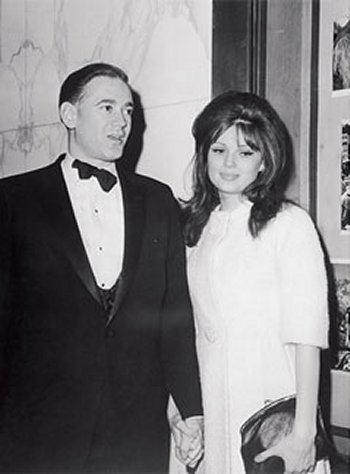 |
Due to Felker's
ability to shine a city-wide spotlight on an individual,
there was serious competition among the city's elite to be
placed on the cover of the magazine. This is another
reason why the
parties at Felker's apartment were
a popular destination for glamorous people vying for
attention. Others came in hopes of hearing a lucky tip. Everyone knew
a chance conversation with the right person could
lead to a career break.
On Monday morning, Felker would transform
the various disclosures into his next set of
stories. Some tidbits were given intentionally, some
were due to loose lips. Felker would quote anonymous sources of
course, but a cursory scan of his most recent guest list would
typically
suggest the identity.
New York magazine was Felker's baby. He understood that the movers and shakers of New York
were obsessed with Status and were dying to be Noticed as
often as possible. So Felker paid his dues and parlayed his unique position to
gain access to the most interesting people he could find.
In the process, Felker made his magazine a must-read for the movers
and shakers of America's premier city.
|
 |
Everyone knew
those smart Upper East Side dinner parties were an extension
of the magazine.
Felker's parties
and his magazine were practically synonymous... each
in turn supported the other.
Through peppery talk on a wide variety of topics such as
politics, real estate, business,
plus scandals about prominent people, Felker was
able to keep a close finger on the pulse of the town. Everyone knew that each issue would contain something sharp, well-informed,
witty and 'trendy'.
As a result, New York
magazine became a target for every aspiring author,
every ambitious politician, shrewd businessman,
hip artist and wealthy socialite hoping to advance their
careers and causes. Wielding the power to decide who
to favor and who to ignore,
Felker became what is
known as a 'kingmaker'.
In addition to
currying favor with the city's cognoscenti, Felker found
time to champion the underdogs as well.
Felker loved to discover hidden nuggets. Felker
understood that 'under the radar' sub-cultures were not going to come to him,
so he was on the lookout for odd stories wherever he went. Clay Felker
always had a stable of creative writers to choose from. As the
ultimate 'trend spotter', Felker made it his business to
notice something interesting, then try to entice one of his gifted writers to poke his or her nose into
it.
|
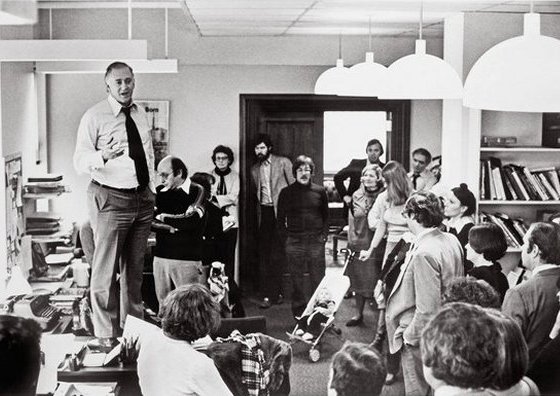 |
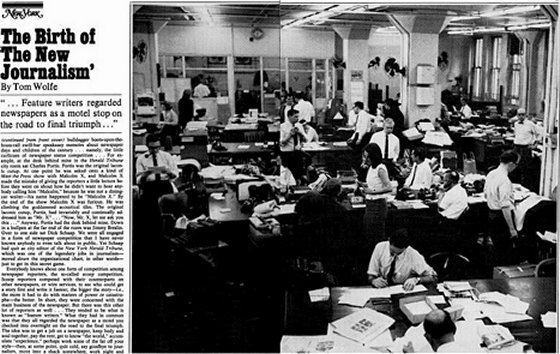
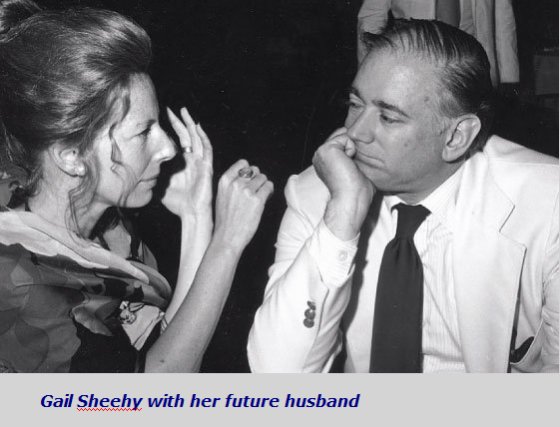
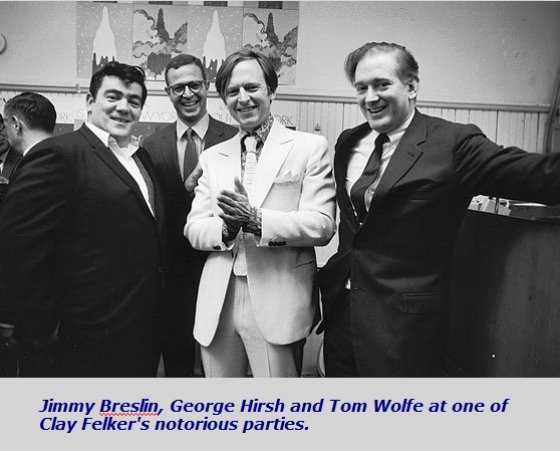 |
New York magazine loved to get its hand's
dirty. As opposed the bland style of the 'offend
no one' New York Times, Felker took special delight in
stories where the Ins and the Outs interfaced awkwardly.
Felker did not bother to conceal his contempt. Using
terms such as 'limousine
liberals', many of the stories he published dripped with barely concealed
mockery. Although his articles outraged both liberals and
conservatives alike, Felker could care less as long as his issues sold out.
Felker's
in-your-face style came to be known as 'The New Journalism'.
Gail Sheehy, an early feminist, was one of many writers who
got her start courtesy of Clay Felker. Her 1976 book Passages
was named by the Library of Congress as one of the ten most
influential books of the era. Felker became such an
admirer of his star reporter, he married her in 1984.
It is easy to
see why Sheehy achieved stardom. She
enjoyed writing popular Cosmo-style articles
for women on to negotiate a
'Man's World' during the Sixties. Sheehy had a gift for the clever phrase.
As an example, Sheehy described women who
frequented
singles bars during the Sixties in this manner.
"Booted,
pant-suited, birth-controlled and pleasure-goaled."
Gail Sheehy's vivid 1971 report on
prostitution in New York was the result of a Felker suggestion.
He asked to Sheehy to investigate the story from an unusual angle.
He told her to put away
her notepad and nice outfits, then don a disguise. Undaunted, Sheehy took to the streets wearing hot pants, white
vinyl boots and a revealing top. Behind puffed up
hair and too much makeup, the disguise worked to perfection. Gail Sheehy
was able to mingle with the 'working girls' and get
some straight talk. This enabled Sheehy to write an astonishing eyewitness account of the sex
trade.
Gail Sheehy's ability to create scandal was a good example
of Felker's fondness for stepping on people's toes.
For example, her expose of the sex trade caused a firestorm
of controversy. It seems that many of the city's
richest, most powerful families and corporations benefited
directly and indirectly from the illegal sex business.
Understandably, the outrage of the people named was
considerable. In this way Sheehy's sex trade story and
others like it created sensation and
controversy. Someone was always mad at Clay
Felker for something one of his writers had written
about them. This was what the man lived
for. He basked in the glory of knowing his magazine
was on the tip of everyone's tongue because he had
pissed off someone important. Who would be
'Felkerized' next?
Felker
changed the face of magazines.
For example,
Clay Felker added a Lifestyle
section as a way to draw attention to everyday places and
people. His innovation was soon copied by every American newspaper. Be
it counterculture, feminism, obsession with status, Clay
Felker encouraged the citizens to take a close look at
themselves.
It has been said
that Felker's New York
helped the Big Apple discover its
own identity.
According to Ken Auletta, a member of Felker's staff, "New York
was the magazine that helped create the notion of the writer
as the star."
Tom Wolfe was
another of Felker's
first superstars. He turned a Felker suggestion into The Electric
Kool-Aid Acid Test, a fascinating book on the
counter-culture. Wolfe went on to become a best-selling author with books like
Bonfire of the Vanities
and The Right Stuff.
Tom Wolfe never forgot who
his mentor was. In a 1993 interview with the Washington Post, Tom Wolfe
called Clay Felker "the greatest idea man that ever
existed."
|
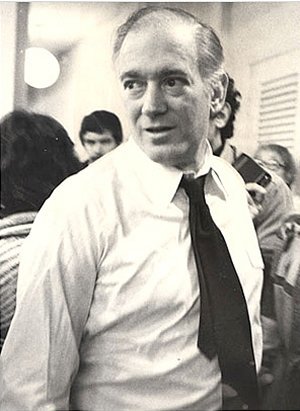 |
Rick Archer's Note:
"Due to
his plum position in the media business, Clay
Felker was said to have more contacts than
believed humanly possible. A celebrated
man about town, Felker made it his job to know
every important person in news, television,
politics, theater, music, fashion, Wall Street,
Hollywood, you name it."
As one can see, Clay Felker was a very
powerful, very influential man. It is
easy to see how a man with friends in high
places could become
the Wizard of Oz.
"Gail Sheehy's ability to create scandal was a good example
of Felker's fondness for stepping on people's toes.
For example, her expose of the sex trade caused a firestorm
of controversy. It seems that many of the city's
richest, most powerful families and corporations benefited
directly and indirectly from the illegal sex business.
Understandably, the outrage of the people named
was considerable. Someone was always mad
at Clay Felker for something one of his writers
had written about them. This was what the
man lived for. He basked in the glory of
knowing his magazine was on the tip of
everyone's tongue because he had pissed off
someone important."
Felker's in-your-face approach explains how
he developed a
legion of enemies.
We will hear more about
Mr. Felker in a
future chapter. Now back to our story.
|
|
|
|